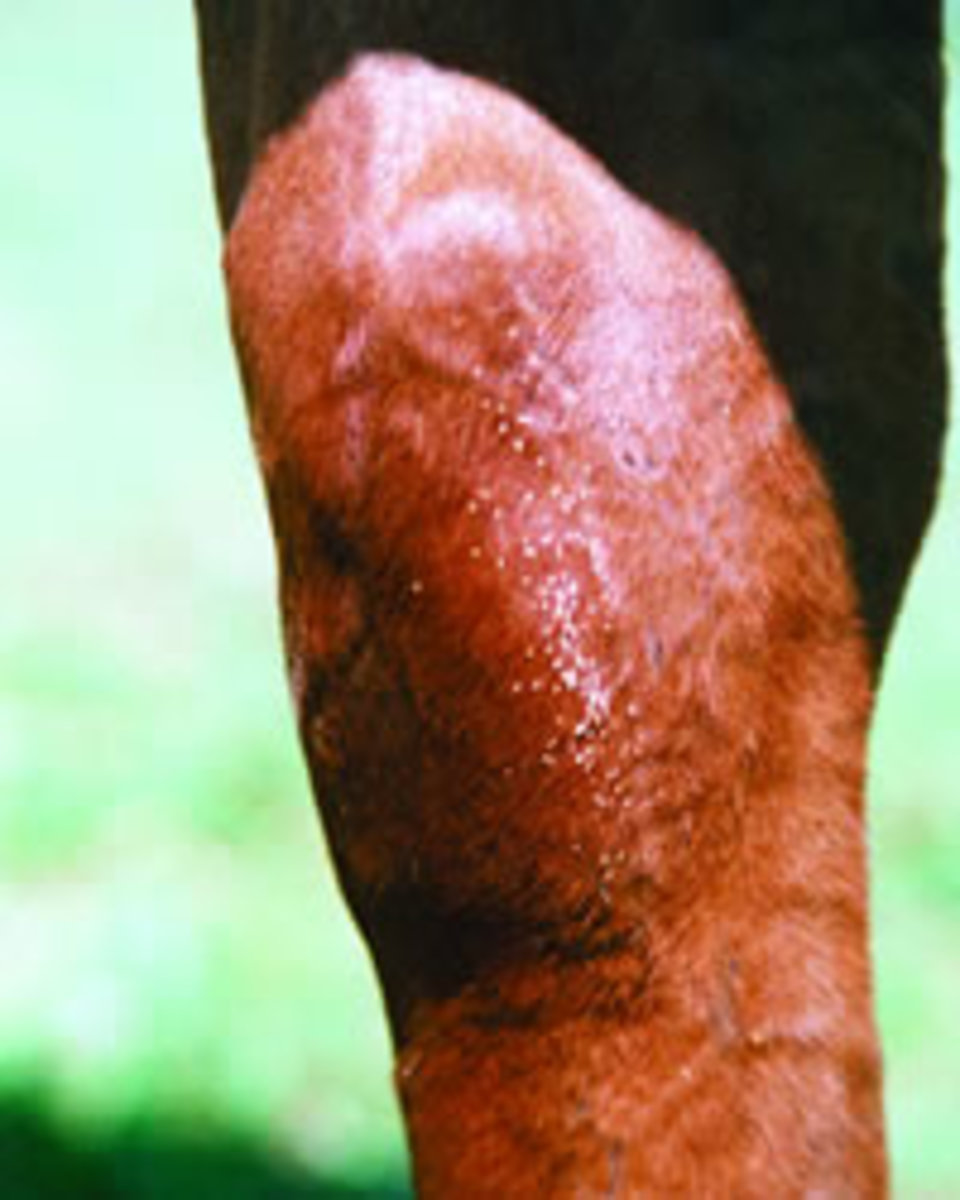Home > Horse Care > Parasite Control > Is My Horse Infested with Bots?
Is My Horse Infested with Bots?
- July 25, 2019
- ⎯ Equus
Q: I have an elderly horse who was turned out with cows for a year. When I brought her home, I dewormed her with ivermectin, then had my veterinarian do a fecal egg count. I was told she was a “low shedder” and there was nothing more I needed to do. However, I noticed while picking her paddock that her manure was covered with botfly larvae, so I wormed her again. She is turned out with another horse, whose manure did not have the bots.

How could botflies have escaped the fecal egg count? I am concerned she may have a severe infestation. She also developed a thick clear-to-whitish discharge from one nostril, which now seems to be subsiding. I was wondering if this could be related to the bots, since part of their life cycle is in the mouth.
A: Seeing bots in the manure is a normal phenomenon, because all horses are infected with these parasites from time to time. Botflies (or Gasterophilus nasalis) start laying their eggs on the legs, chest, neck and bellies of horses starting in May and June and continue throughout the warm summer months. The horses lick at the eggs, which causes them to hatch and allows the larvae to migrate into the mouth. Depending on the species, they either burrow into the base of the tongue or hide between the molars.
Three to six weeks later, the larvae emerge and migrate to the stomach, where they attach to the lining and remain for the winter months. The following spring and summer, the mature larvae are deposited on the ground in the manure to develop into adult flies.
Because botfly larvae are immature insects, not worms, they do not shed eggs inside the horse, so a fecal egg count will not tell you whether a horse is carrying this particular parasite. Bots in the manure are large and rather ugly, so they can be alarming, but they tend to get more attention than they deserve. Horses very rarely carry enough to cause any serious harm.
You do not describe the sequence and timing of events in your case, so it is difficult to figure out exactly what happened. If you first saw the bots within a few days after you gave your horse the ivermectin, that may just have been an indication that the deworming treatment was effective. It is also normal to see bots in the spring, since that is when they emerge in the feces as part of their life cycle. Ivermectin has good effect against bots, so you certainly chose the right treatment.
The discharge you mention coming from your horse’s nostril cannot be associated with bot infection. Although botflies do reside in the mouth for many weeks, their effect on the horse at this stage is widely debated. They will not, however, burrow in through the nostril.
On extremely rare occasions, I have seen bot infections that caused disease in horses. However, those cases were horses with severe immuno-suppression. An older horse, such as yours, may have a weakened immune system that leaves her at greater risk of falling ill with any kind of infection, including parasites.
My best recommendation is to keep a sharp eye on your mare’s overall health and well-being. A healthy horse can easily tolerate quite large parasite burdens, while the unthrifty horse may need a few more anthelmintic treatments.
Martin K. Nielsen, DVM, PhD, DEVPC
University of Kentucky
Lexington, Kentucky





